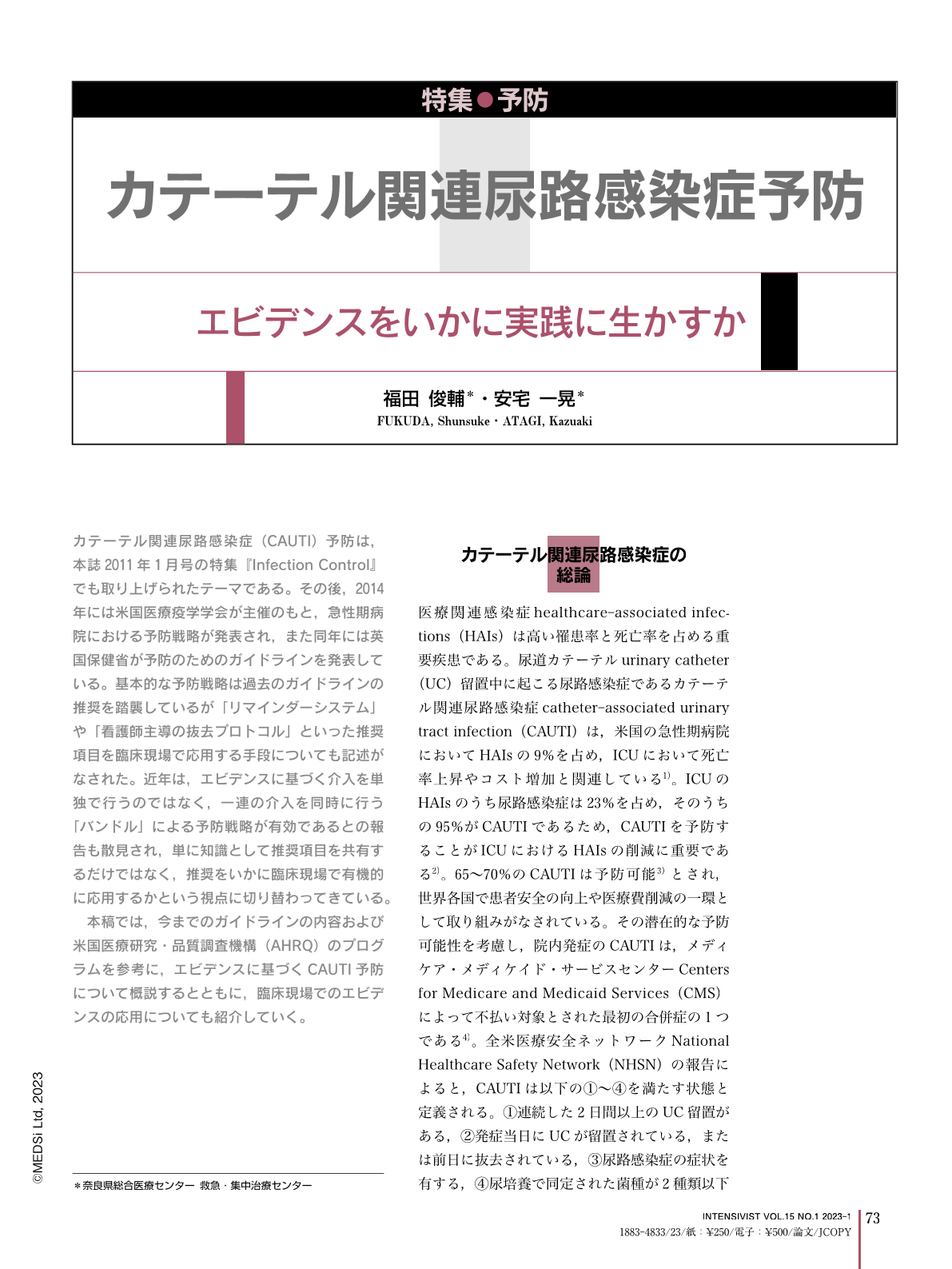Japanese
English
- 有料閲覧
- Abstract 文献概要
- 1ページ目 Look Inside
- 参考文献 Reference
カテーテル関連尿路感染症(CAUTI)予防は,本誌2011年1月号の特集『Infection Control』でも取り上げられたテーマである。その後,2014年には米国医療疫学学会が主催のもと,急性期病院における予防戦略が発表され,また同年には英国保健省が予防のためのガイドラインを発表している。基本的な予防戦略は過去のガイドラインの推奨を踏襲しているが「リマインダーシステム」や「看護師主導の抜去プロトコル」といった推奨項目を臨床現場で応用する手段についても記述がなされた。近年は,エビデンスに基づく介入を単独で行うのではなく,一連の介入を同時に行う「バンドル」による予防戦略が有効であるとの報告も散見され,単に知識として推奨項目を共有するだけではなく,推奨をいかに臨床現場で有機的に応用するかという視点に切り替わってきている。
本稿では,今までのガイドラインの内容および米国医療研究・品質調査機構(AHRQ)のプログラムを参考に,エビデンスに基づくCAUTI予防について概説するとともに,臨床現場でのエビデンスの応用についても紹介していく。
Catheter-Associated Urinary Tract Infection (CAUTI) prevention was the topic of a special issue of Infection Control 2011. Subsequently, in 2014, the American Society for Healthcare Epidemiology organized a publication for prevention strategies in acute care hospitals, and in the same year, the Department of Health in the UK published guidelines for prevention. While the basic prevention strategies follow the content of previous guidelines, evidence has been added to apply the evidence to clinical practice, such as “Nurse-Driven Protocols” and “Reminder Systems”. In recent years, there have been reports of the effectiveness of “bundle” prevention strategies, in which a series of interventions are performed simultaneously rather than independently based on evidence. The focus has shifted from simply sharing recommendations as knowledge to direct application to clinical practice. This paper outlines evidence-based CAUTI prevention strategies with reference to the contents of the guidelines and the programs of the Agency for Healthcare Research and Quality (AHRQ), and introduces the application of evidence to clinical practice.

Copyright © 2023, MEDICAL SCIENCES INTERNATIONAL, LTD. All rights reserved.


